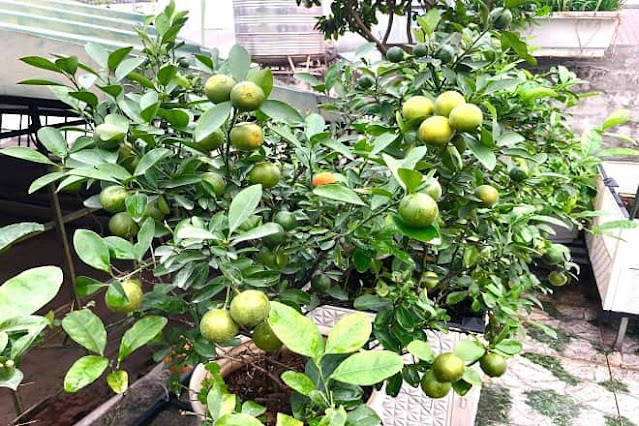
70% fine alluvial soil
30% mixture of:
Coir dust
Rice husk charcoal
Earthworms
Goat manure
For approximately 10kg of growing medium, add 2 handfuls of bat guano and 1 handful of phosphorus fertilizer.
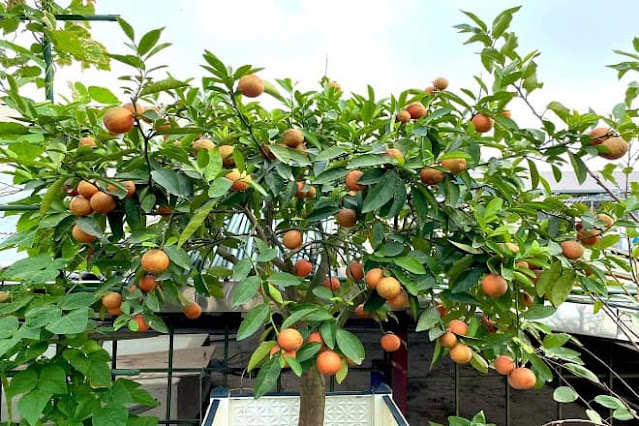
Lemon varieties are all sun-loving and have a low water tolerance. Therefore, a location that receives full sun throughout the day is ideal. A rooftop is an excellent choice.
Eureka Lemon: This vigorous tree can produce flowers and fruits continuously throughout the year. The tree's resting period is typically in July, during which time it bears no flowers or fruits. The time from flowering to harvesting one batch of fruit is approximately 4 months.
Calamondin Lemon: This variety produces only one fruit season per year. The tree starts flowering between January and March in the Gregorian calendar. The fruits are ready for harvest around November and December. The period from flowering to ripening is approximately 8-10 months.
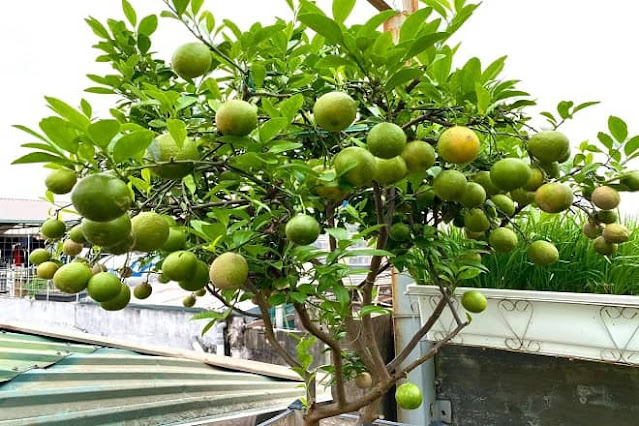
Fill the pot with the prepared growing medium and mix thoroughly.
Place the lemon seedling in the pot, ensuring the roots are well-covered and the base is firmly anchored.
Water the plant thoroughly until the base is saturated and then place it in a sunny location.
Pruning: Once the tree has established its branches and leaves and starts producing fruit, continue pruning by removing any small, thin branches. For longer branches that are not bearing fruit, cut them back to 3-4 leaf nodes. This will encourage new growth on these branches and increase the likelihood of further flowering.
Watering: Lemon trees are drought-tolerant and should only be watered when the top 2-3 inches of soil feel dry to the touch. Avoid overwatering, as this can lead to root rot.
Fertilization: During the growing season (spring and summer), fertilize your lemon tree every 4-6 weeks with a balanced citrus fertilizer. Follow the instructions on the fertilizer label for the appropriate application rate.
Whiteflies and Sooty Mold: Mix the juice of 1 lemon (squeeze the lemon thoroughly to extract as much juice as possible), strain out the pulp, add 2 liters of water, and a few drops of dish soap. Shake the mixture well to dissolve the soap and spray it on the affected leaves.
Dry Rot:
Prevention: Ensure proper watering and drainage, and inspect the tree regularly for signs of stem borers.
Stem Borers: These pests can be identified by the presence of frass (woodworm excrement) on the trunk or in the potting mix.
Treatment: If detected early, apply a solution of garlic and chili pepper extract to the affected area.
Repotting: As your lemon tree grows, it may need to be repotted into a larger container. Signs that the tree needs repotting include roots growing out of the drainage holes or the tree becoming top-heavy and unstable.
Winter Care: During the winter, when the tree is dormant, reduce watering and fertilization. Move the pot to a sheltered location if temperatures drop below freezing.
Ý kiến bạn đọc
Những tin mới hơn
Những tin cũ hơn
 The most unique carrots in the world!
The most unique carrots in the world!
05.09.2024
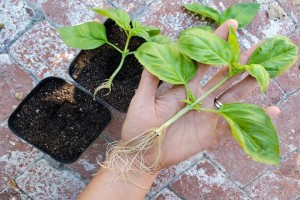 Guide to Propagating Basil Cuttings for Beginners
Guide to Propagating Basil Cuttings for Beginners
30.08.2024
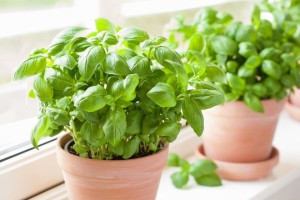 How to take care of basil plant indoors for Beginners
How to take care of basil plant indoors for Beginners
30.08.2024
 Interesting Facts About Ants
Interesting Facts About Ants
23.08.2024
 Coucal bird: Natural Enemy of Snakes
Coucal bird: Natural Enemy of Snakes
22.08.2024